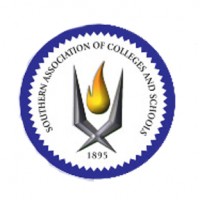EagleCharter High and SMART Charter Middle – Title 1 Schools
Program Description
This program provides financial assistance to LEAs and schools with high numbers or high percentages of poor children to help ensure that all children meet challenging state academic standards. Federal funds are currently allocated through four statutory formulas that are based primarily on census poverty estimates and the cost of education in each state.
- Basic Grants provide funds to LEAs in which the number of children counted in the formula is at least 10 and exceeds 2 percent of an LEA’s school-age population.
- Concentration Grants flow to LEAs where the number of formula children exceeds 6,500 or 15 percent of the total school-age population.
- Targeted Grants are based on the same data used for Basic and Concentration Grants except that the data are weighted so that LEAs with higher numbers or higher percentages of poor children receive more funds. Targeted Grants flow to LEAs where the number of schoolchildren counted in the formula (without application of the formula weights) is at least 10 and at least 5 percent of the LEA’s school-age population.
- Education Finance Incentive Grants (EFIG) distribute funds to states based on factors that measure:
- a state’s effort to provide financial support for education compared to its relative wealth as measured by its per capita income and
- the degree to which education expenditures among LEAs within the state are equalized.
Once a state’s EFIG allocation is determined, funds are allocated (using a weighted count formula that is similar to Targeted Grants) to LEAs in which the number of poor children is at least 10 and at least 5 percent of the LEA’s school-age population. LEAs target the Title I funds they receive to schools with the highest percentages of children from low-income families. Unless a participating school is operating a schoolwide program, the school must focus Title I services on children who are failing, or most at risk of failing, to meet state academic standards. Schools in which poor children make up at least 40 percent of enrollment are eligible to use Title I funds for schoolwide programs that serve all children in the school. LEAs also must use Title I funds to provide academic enrichment services to eligible children enrolled in private schools.
Types of Projects More than 50,000 public schools across the country use Title I funds to provide additional academic support and learning opportunities to help low-achieving children master challenging curricula and meet state standards in core academic subjects. For example, funds support extra instruction in reading and mathematics, as well as special preschool, after-school, and summer programs to extend and reinforce the regular school curriculum.
Additional information This program provides financial assistance through State educational agencies (SEAs) to local educational agencies (LEAs) and public schools with high numbers or percentages of poor children to help ensure that all children meet challenging State academic content and student academic achievement standards.
LEAs target the Title I funds they receive to public schools with the highest percentages of children from low-income families. Unless a participating school is operating a schoolwide program, the school must focus Title I services on children who are failing, or most at risk of failing, to meet State academic standards. Schools enrolling at least 40 percent of students from poor families are eligible to use Title I funds for schoolwide programs that serve all children in the school.
In SY 2006-07 Title I served more than 17 million children. Of these students, approximately 60 percent were in kindergarten through fifth grade, 21 percent in grades 6-8, 16 percent in grades 9-12, three percent in preschool, and less than one percent ungraded.
Title I is designed to help students served by the program to achieve proficiency on challenging State academic achievement standards. Title I schools with percentages of low income students of at least 40 percent may use Title I funds, along with other Federal, State, and local funds, to operate a “school wide program” to upgrade the instructional program for the whole school. Title I schools with less than 40 percent low income students or that choose not to operate a school wide program offer a “targeted assistance program” in which the school identifies students who are failing, or most at risk of failing, to meet the State’s challenging academic achievement standards. Targeted assistance schools design, in consultation with parents, staff, and district staff, an instructional program to meet the needs of those students. Both school wide and targeted assistance programs must use instructional strategies based on scientifically based research and implement parental involvement activities.
Under Title I, local educational agencies (LEAs) are required to provide services for eligible private school students, as well as eligible public school students. In particular, section 1120 of Title I, Part A of the Elementary and Secondary Education Act (ESEA), as amended by the No Child Left Behind Act (NCLB), requires a participating LEA to provide eligible children attending private elementary and secondary schools, their teachers, and their families with Title I services or other benefits that are equitable to those provided to eligible public school children, their teachers, and their families. These services must be developed in consultation with officials of the private schools. The Title I services provided by the LEA for private school participants are designed to meet their educational needs and supplement the educational services provided by the private school. For additional information on services to eligible private school children, see the U.S. Department of Education Office of Non-Public Education website.






